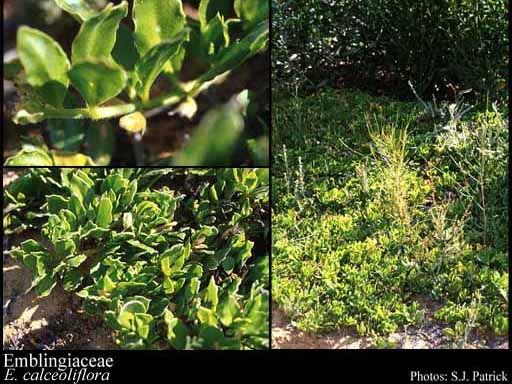- Reference
- Kew Bull. 18:257 (1965)
- Name Status
- Current







Scientific Description
Family Sometimes included in Polygalaceae.
Habit and leaf form. Herbs (prostrate ‘subshrub’). Perennial; plants with neither basal nor terminal concentrations of leaves. Mesophytic, or xerophytic. Leaves opposite (to subopposite); with cartilaginous margins; petiolate; simple; epulvinate. Leaf blades entire; subrhomboid. Leaves minutely with stipules; without a persistent basal meristem.
Reproductive type, pollination. Fertile flowers hermaphrodite. Unisexual flowers absent. Plants hermaphrodite.
Inflorescence and flower features. Flowers solitary (axillary); very irregular. The floral asymmetry involving the perianth and involving the androecium. Flowers cyclic; pentacyclic. Floral receptacle developing an androphore (inserted in a slit in the calyx). Free hypanthium absent. Perianth with distinct calyx and corolla; 7; 2 -whorled; anisomerous. Calyx 5; 1 -whorled; gamosepalous; unequal but not bilabiate (‘posticously dimidiate’). Corolla 2 (anticous); 1 -whorled; gamopetalous (the petals laterally connate into a slipper-like structure, hooded at the apex, externally sericeous); unequal but not bilabiate. Androecium 8, or 9. Androecial members free of the perianth; free of one another. Androecium including staminodes. Staminodes 4–5 (posticous). Stamens 4 (anticous); diplostemonous. Gynoecium 1 carpelled. The pistil 1 celled. Gynoecium monomerous; of one carpel; superior (apically two-winged).
Fruit and seed features. Fruit non-fleshy. The fruiting carpel indehiscent; pendulous within the calyx from the apex of the gynophore, with the thin pericarp adherent to the seed. Seeds scantily endospermic. Embryo well differentiated; bent (conduplicate).
Geography, cytology, number of species. World distribution: Western Australia. 1 species.